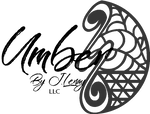Tweezing Versus Shaving Versus Hair Reduction Oil: Which is Best for Avoiding Ingrown Hairs

You wake up, look in the mirror, and see those pesky ingrown hairs that just won't quit. You've tried plucking, shaving, hair removal creams - everything! But those suckers keep coming back again and again. What's the deal?
Is there a secret to keeping your skin smooth without the ingrown hairs rearing their ugly heads? In this article, we're breaking down the nitty gritty between three of the most common hair removal methods - tweezing, shaving, and hair reduction oils.
We'll compare the pros and cons of each, so you can figure out once and for all which is really the best for avoiding those nasty ingrowns. Spoiler alert: there IS a winner in this hair removal comparison. So grab a cup of coffee, put your feet up, and finally get ready to solve your biggest facial hair reduction challenges.
What are the causes of ingrown hairs?
Ingrown facial hairs are a common but pesky problem, and understanding how they're caused can help you prevent them from crashing your skin's party. These little nuisances occur when hair curls back or grows sideways into the skin, leading to inflammation.
The root cause of these unruly hairs often lies in our grooming habits. Shaving, waxing, or tweezing can all contribute to the problem, especially if done incorrectly. Shaving too harshly, pulling the skin taut during a shave, or using a dull blade can encourage the hair to retract below the skin surface and grow inward. Similarly, waxing and tweezing can alter the hair's natural growth pattern, leading to potential ingrowths.
Dead skin cells can accumulate and plug up hair follicles, creating a barrier that traps the hair beneath the skin. This is why regular exfoliation is often recommended as a preventive measure, as it helps to clear away dead skin and allows hairs to grow out more freely.
Individuals with naturally curly or coarse hair types may find themselves more frequently dealing with ingrown hairs. The hair's innate curliness makes it more likely to bend back and re-enter the skin after being cut or when growing. This means that those with curly hair need to be extra vigilant with their skincare and grooming routines to mitigate the risk of ingrowns.
Understanding the mechanics behind ingrown hairs is the first step in preventing them. By adopting proper shaving techniques, ensuring your skin is exfoliated, and being gentle with hair removal, you can minimize the chances of these stubborn hairs disrupting your skin's harmony.
The Problem of Ingrown Hairs
Ingrown hairs happen when hair follicles get trapped under the skin, causing irritation, redness, and bumps. They're common on areas like the bikini line, face, legs, and armpits - anywhere you remove hair. The trouble is that getting rid of hair often leads to ingrown hairs, whether you tweeze or shave. So, which method is least likely to cause these pesky ingrown hairs?

Tweezing
Tweezing removes hair from the root but can also remove live skin cells. This disruption of the skin barrier makes ingrown hairs more likely. Tweezing also requires hair to grow back to a certain length before it can be tweezed again, leading to stubble that can curl back into the skin.
Tweezing does last longer than shaving, around 2 weeks. To minimize ingrowns when tweezing, be sure to exfoliate the area regularly to remove dead skin cells. Pull the hair in the direction of growth and avoid over-tweezing.
Shaving
Shaving cuts hair off at the surface of the skin, so hair has a blunt end that can burrow back into the skin. Shaving often requires going over the same area multiple times, irritating the skin. However, shaving is quick, inexpensive, and can cover large areas. Use a clean, sharp razor and shave in the direction of hair growth to minimize ingrown hairs.
Depilatory Creams
Chemical depilatories dissolve hair so there's no stubble left behind to become ingrown. However, the chemicals can irritate sensitive skin. Depilatories also have an unpleasant smell and can be messy to apply. They may require several applications to dissolve thick or stubborn hair.

Hair Reduction Oils
A natural hair reduction oil helps slow hair growth over time and reduces ingrown hairs. The oil is applied directly to the skin after hair removal. It works by penetrating the hair follicles to inhibit hair growth. It can take 6-12 weeks of regular use to see results, but oils provide a chemical-free solution to minimizing ingrown hairs in the long run.
Because hair reduction oil works to thin the hair and slow growth, it may result in less ingrown hairs than other hair reduction methods.
An ideal approach is to combine tweezing and hair reduction oil use for the smoothest, ingrown-free skin. With regular exfoliation and moisturizing, you'll be on your way to beating those pesky ingrowns for good.
Can you pop an ingrown hair?
It's generally not recommended to "pop" an ingrown hair. While it might be tempting to try to remove the hair yourself, this can lead to irritation, infection, and even scarring. The best approach is to gently exfoliate the area to remove any dead skin cells and to help the hair return to the surface of the skin naturally.
If the ingrown hair is causing discomfort or becomes infected, it's wise to seek assistance from your dermatologist. They might use sterile equipment to safely release the hair and treat the area to avoid complications. Remember, a little patience and proper care can go a long way in managing ingrown hairs.
Do ingrown hairs go away by themselves?
Ingrown hairs will often resolve themselves without intervention. Your skin can sometimes naturally expel the hair, and the inflammation can go down on its own. To help the process along, you can gently exfoliate the area to remove dead skin cells, which may be trapping the hair.
It's also a good idea to avoid shaving or waxing the affected area until it's healed to prevent further irritation. If an ingrown hair is persistent or becomes painful, it might be worth checking in with your dermatologist for advice on the best course of action.
We hope you have enjoyed the lowdown on tweezing, shaving, and hair reduction oils for avoiding ingrown hairs. We covered the pros and cons of each method.
Tweezing gives you precision but can be painful and time-consuming. Shaving is fast and inexpensive but can cause irritation. Hair reduction oils are gentle but take time to work.
Ultimately, it's about finding what works best for your hair type, skin sensitivity, and lifestyle. Try out different techniques and see how your skin reacts. Be patient as you find the right hair removal routine for you. And don't forget to exfoliate and moisturize to prevent ingrowns!
Hopefully, you now feel equipped to choose between tweezing, shaving, and oils. Let us know which one you decide on!





